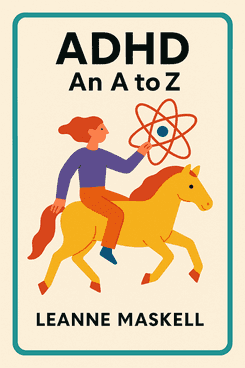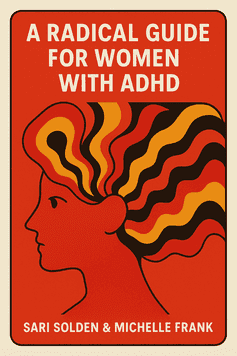What is
ADHD an A-Z by Leanne Maskell about?
ADHD an A-Z is a practical guide offering actionable strategies for managing ADHD-related challenges, structured in an accessible A-Z format. It covers burnout, finances, time management, and relationships, with tools like budgeting plans for impulsive spending and techniques to address rejection sensitivity. Written by an ADHD coach diagnosed at 25, the book combines personal experience with neurodiversity-affirming advice to help readers harness their unique cognitive strengths.
Who should read
ADHD an A-Z?
This book is ideal for adults with ADHD (diagnosed or self-identifying), caregivers, and professionals seeking to support neurodivergent individuals. Its non-clinical, empathetic approach validates ADHD experiences while providing frameworks for daily challenges like emotional regulation and task prioritization. Mental health practitioners and coaches will also find it a valuable resource for client-centered strategies.
Is
ADHD an A-Z worth reading for managing ADHD?
Yes—the book’s strength lies in its ADHD-friendly structure, avoiding dense paragraphs in favor of concise, topic-specific sections. Unlike traditional clinical guides, it offers lived-experience insights, such as reframing hyperactivity as creativity and navigating workplace accommodations. Reviews praise its validation of ADHD struggles and actionable fixes for “neurotypical advice” gaps.
How does
ADHD an A-Z help with impulsive spending?
Leanne Maskell provides tailored budgeting templates and mindfulness exercises to curb impulsive financial decisions, a common ADHD challenge. The book emphasizes reconciling impulsive tendencies with long-term goals through adaptive planning rather than restrictive rules.
What does
ADHD an A-Z say about rejection sensitive dysphoria (RSD)?
The author explains RSD’s neurological roots in ADHD and offers coping mechanisms, such as grounding techniques and reframing self-critical thoughts. Maskell normalizes RSD as a shared experience, advising readers to communicate needs in relationships and workplaces.
How is
ADHD an A-Z different from other ADHD books?
Written by an ADHD coach with lived experience, it avoids prescriptive “fixes” and instead focuses on self-acceptance and leveraging neurodivergent traits. The A-Z format caters to ADHD attention patterns, allowing non-linear reading and quick access to specific topics like burnout or time blindness.
Can
ADHD an A-Z help with workplace challenges?
Yes—it includes strategies for requesting accommodations, managing distractions, and breaking tasks into ADHD-friendly steps. Maskell draws from her corporate training experience with companies like Disney UK, emphasizing productivity through structured flexibility rather than rigid schedules.
What are key takeaways from
ADHD an A-Z?
- ADHD brains thrive when embracing creativity over conformity.
- Practical tools like time-blocking and “body doubling” improve task completion.
- Self-compassion is critical when navigating emotional dysregulation.
How does Leanne Maskell’s background inform
ADHD an A-Z?
Diagnosed at 25 after career struggles, Maskell blends her legal training, ADHD coaching practice, and work with organizations like the WHO. Her lived experience adds credibility to advice on turning ADHD traits into strengths.
Does
ADHD an A-Z address relationships and social challenges?
Yes—it provides communication frameworks for explaining ADHD needs to partners, friends, and colleagues. Topics include managing sensory overload in social settings and balancing spontaneity with relational consistency.
Why is
ADHD an A-Z formatted as an A-Z guide?
The structure accommodates ADHD reading preferences, allowing readers to jump between topics without linear pressure. This design reduces overwhelm and makes the book a reusable reference for specific challenges like decision fatigue or procrastination.
How does
ADHD an A-Z approach neurodiversity?
Maskell rejects pathologizing ADHD, framing it as a cognitive difference with unique advantages. The book encourages readers to identify environments where their brain thrives, advocating for systemic inclusivity over individual adaptation.




















